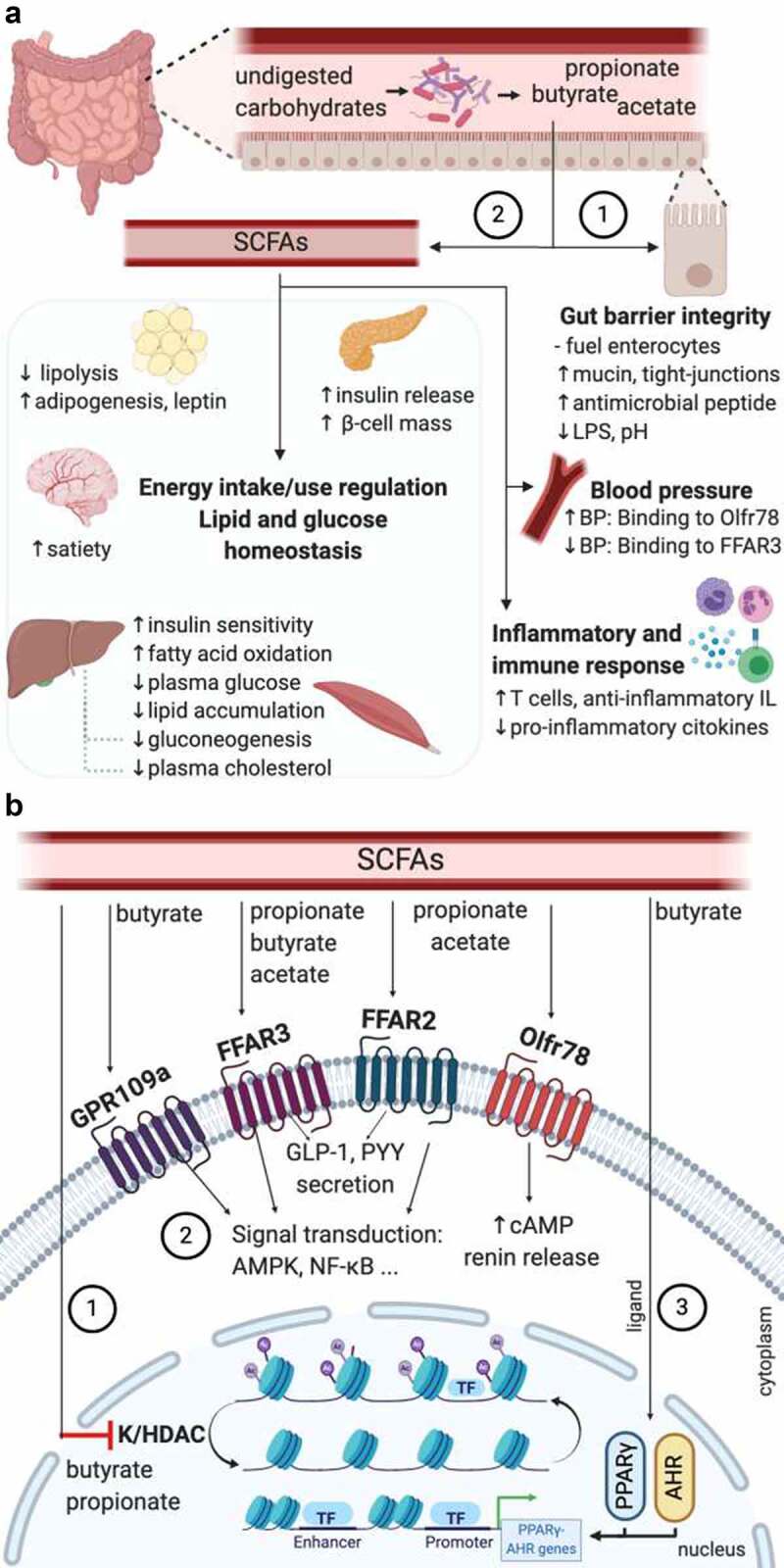Figure 3.

Beneficial roles of SCFA in cardio-metabolic health and the indirect mechanisms involved
(A) Undigested carbohydrates reach the intestine, where they are fermented by the SCFA-producing bacteria generating acetate, propionate, and butyrate. SCFAs can act using two different mechanisms: 1) direct action on the enterocytes, maintaining the gut barrier integrity or 2) indirect action regulating the inflammatory and immune response, blood pressure, energy intake and use, and lipid and glucose homeostasis, through the mechanisms illustrated in (B). (B) 1) Inhibition of K/HDAC leads to histone hyperacetylation, which turns in a higher accessibility of transcription factors to the promoter regions of different genes; 2) signaling transduction activation (in the small intestine, colon, liver, spleen, heart, skeletal muscle, neurons, immune cells, and adipose tissues), and GLP-1 and PYY secretion (in intestinal enteroendocrine L-cells) caused by the binding of SCFAs to the G protein-coupled receptors, and increase of cAMP levels by the binding of propionate or acetate to the receptor Olfr78/OR51E2 (in vascular smooth muscle cells in the peripheral vasculature and renal afferent arteriole). GLP-1 and PYY enter into the systematic circulation exerting benefits in different tissues and cells; 3) butyrate working as a ligand of the AHR and PPARγ, leading to the expression of genes dependent on these two transcription factors. AMPK, AMP-activated protein kinase; AHR, aryl hydrocarbon receptor; BP, blood pressure; cAMP, cyclic adenosine monophosphate; FFAR, free fatty acid receptor; GLP-1, glucagon-like peptide-1; GPR109a, G-protein coupled receptor-109a; IL, interleukins; K/HDAC, lysine/histone deacetylase; LPS, lipopolysaccharides; NF-κB, nuclear factor kappa β; Olfr78, olfactory receptor-78; PYY: peptide YY; SCFA, short-chain fatty acid; TF, transcription factor. Created with BioRender.com
